
Germany - 1938

 |
DKE 38 - Deutscher
Kleinempfänger Germany - 1938 |
 |
|
|
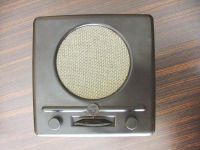 |
Italiano |
||
|
|
||||
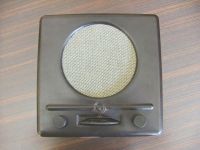 |
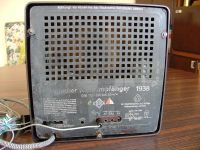 |
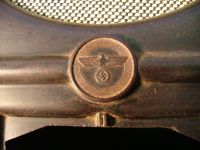 |
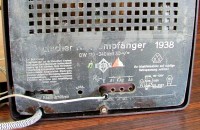 |
|
|
Il DKE era una delle radio popolari volute dal regime nazista per permettere la radiodiffusione delle informazioni verso la popolazione. Veniva prodotto da svariate ditte, costava poco e veniva addirittura offerto in vendita a rate, un marco al mese, per permettere a tutte le famiglie anche le più povere, di ascoltare musica notizie e ovviamente la propaganda del regime. La radio era realizzata con materiali poveri, cartone e bachelite, il circuito era a reazione e nella versione a corrente alternata impiegava due valvole: una VCL11 e una VY2. Di questo ricevittore ne venne prodotto anche una versione a batterie (oggi molto più rara) per le zone sprovviste di alimentazione elettrica, la quale era equipaggiata con tre valvole. La DKE fu commercializzata in Germania dal 1938 in avanti, e fu prodotta anche dopo il secondo conflitto mondiale, naturalmente senza gli emblemi nazisti che caratterizzavano il modello anteguerra. Il circuito del Deutscher Klein Empfangër era a reazione, riceveva le Onde Lunghe e le Onde Medie (da 800 a 2000 m e da 200 a 600 m) e nella versione a corrente alternata impiegava due valvole: la VCL11 e la VY2. La VCL11 era un triodo-tetrodo a fascio, una valvola multifunzione progettata appositamente per ridurre al massimo il numero dei componenti della radio, aveva la tensione di accensione a 90 V; la VY2 invece era una Rettificatrice a semionda, con tensione di filamento a 30 V. Alimentate con i filamenti collegati in serie le valvole si accendevano a 120 Vac, ma una grossa resistenza a filo avvolto su supporto di ceramica era dotata di un ponticello che permetteva alla DKE di funzionare con tensione di alimentazione selezionabile da 110/130, 150 o 220 V alternati. L'altoparlante era realizzato con il cestello in cartone pressato ed era del tipo ad alta impedenza a spillo. Le dimensioni del mobiletto in bachelite marrone scuro della DKE erano: 24 x 24 x 12 cm e il peso di era di 1.9 kg. Per ripristinare il funzionamento dell'esemplare che avevo acquistato alla fine degli anni '90 alla fiera Ham Radio di Friedrichshafen in Germania è stato sufficiente sostituire la VY2 che aveva il filamento interrotto, svuotare i condensatori elettrolitici del loro contenuto originale e sostituirlo con due componenti moderni di capacità e tensione di isolamento superiori, i quali essendo più piccoli sono potuti entrare facilmente nei vecchi involucri che poi ho rinchiuso con della colla sigillante nera . Ovviamente le prestazioni del ricevitore non sono risultate eccezionali, per riuscire ad ascoltare qualche stazione ho dovuto collegare alle apposite prese posteriori un'antenna a dipolo, ma la soddisfazione di sentire voci e musica sortire dal vecchio altoparlante di cartone è stata grande. ♣ Articolo di IK3HIA pubblicato su Antique Radio Magazine N° 21 - 11/1997. © IK3HIA, 1997. |
||||
 |
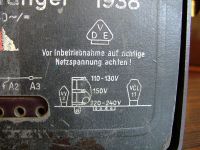 |
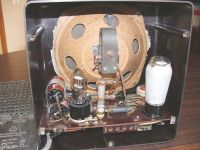 |
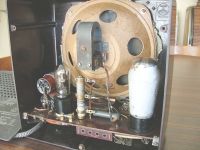 |
|
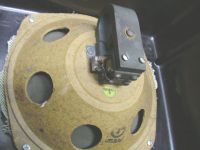 |
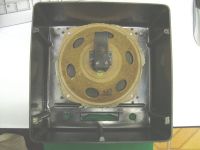 |
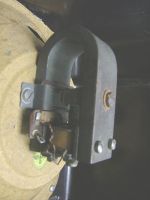 |
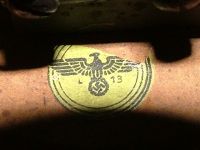 |
|
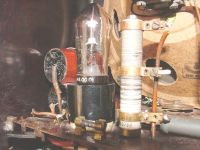 |
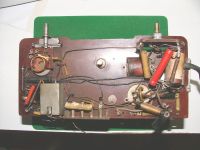 |
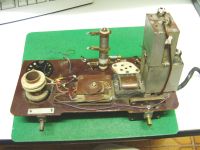 |
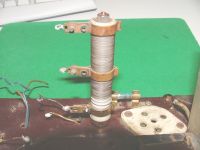 |
|
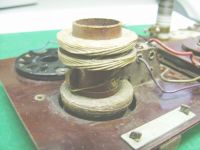 |
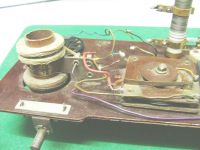 |
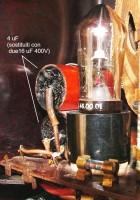 |
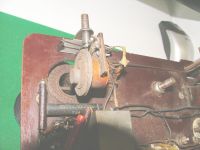 |
|
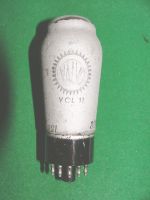 |
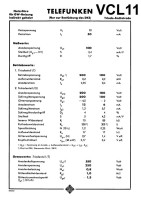 |
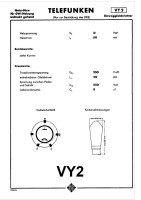 |
 |
|
|
|
||||
|
|
||||
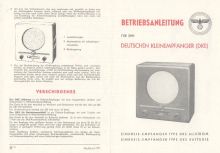 |
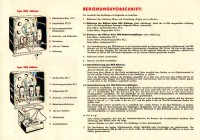 |
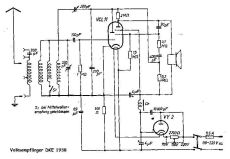 |
||
|
Return to top of page
|
||||
| Return to: Vecchie Radio | Back to: Volksradioempfängeren page |